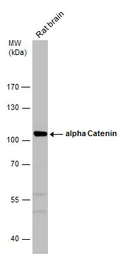alpha 1 Catenin antibody
Cat. No. GTX106014
Cat. No. GTX106014
-
HostRabbit
-
ClonalityPolyclonal
-
IsotypeIgG
-
ApplicationsWB IHC-P IP
-
ReactivityHuman, Mouse, Rat, Cat, Dog






